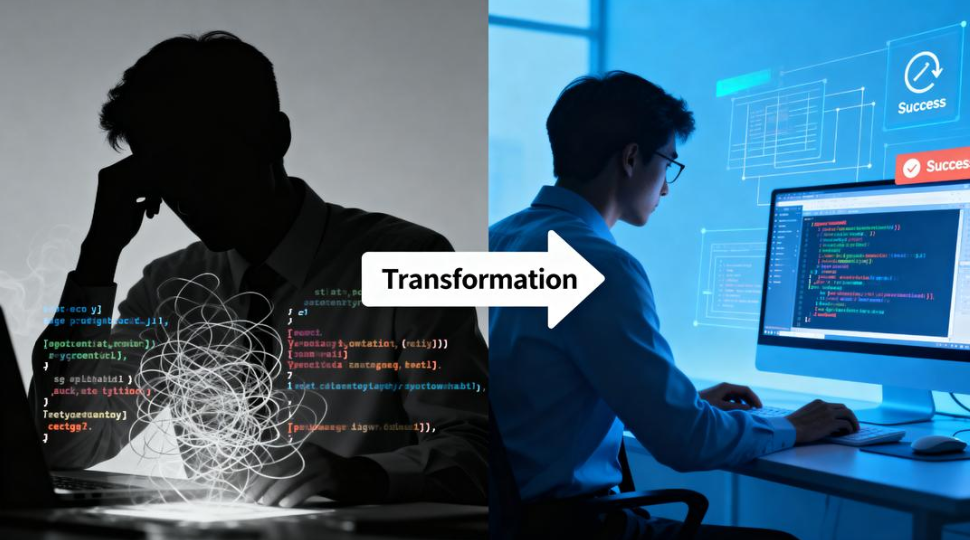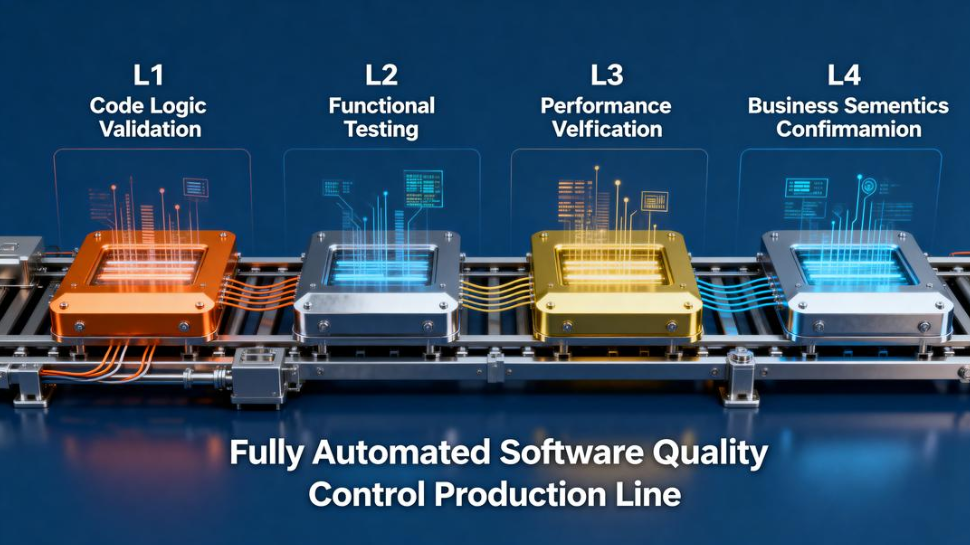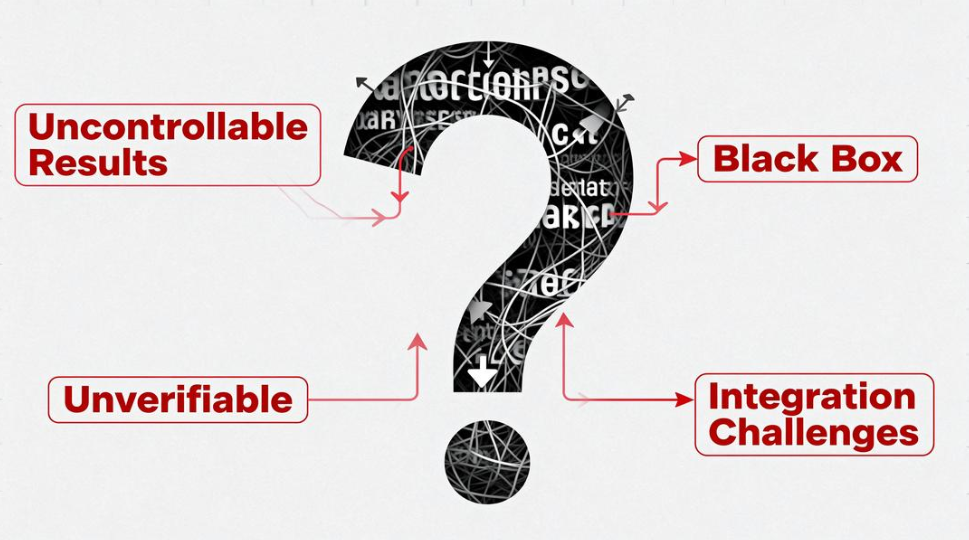When enterprise applications demand more than "maybe it works," we build an automated software production line that guarantees "it will work."
If you're a leader exploring AI-driven business innovation, this scenario may feel familiar:
It's late at night. You're fine-tuning a complex prompt in a ChatGPT dialog, hoping it will generate a small application to analyze sales data and predict inventory risks. After dozens of exchanges, it seems to understand and produces a block of seemingly perfect code. But when your team deploys it, problems emerge: the code contains hidden bugs; it fails to connect stably to your database; and most critically, when you need to adjust a business rule, the entire conversation context collapses like a house of cards. You're back to square one, replaying the exhausting "prompt guessing game."
This "vague promise" has become a major roadblock to enterprise AI adoption. AI acts more like a brilliant but unconstrained "advisor"—great for inspiration, but incapable of delivering stable, reliable, business-critical systems. The root cause is that traditional "prompt engineering" and single-agent frameworks are inherently exploratory conversations, not engineered delivery processes.

Why Do Traditional AI Approaches Fail for Mission-Critical Business Applications?
Unpredictable Results: Hallucinations mean AI output is inherently non-deterministic. A flawless run today could fail catastrophically tomorrow.
Untestable Systems: How do you write test cases for code that's dynamically generated from natural language? Traditional QA processes break down, making quality assurance nearly impossible.
Black Box Integration Nightmare: Generated code is like a maze without a blueprint. Subsequent maintenance, debugging, and integration with existing systems become prohibitively expensive, if not entirely unfeasible.
Enterprise IT requires determinism, stability, and maintainability. When AI cannot meet these basic requirements, it remains confined to experimental, peripheral projects, unable to touch core business operations.

The LBAI Solution: Building a Fully Automated "Software Quality Control Line"
At LBAI, we fundamentally rethought the problem. Instead of chasing a "more obedient" AI, we built an engineering system designed to harness, validate, and convert AI's creativity into industrial-grade software artifacts. The core of this system is our proprietary L1-L4 Automated Testing and Verification Framework.
Think of it as a fully automated "software quality control line" for AI-generated code.
When your natural language requirement enters the LBAI system, it doesn't start an aimless conversation. Instead, it initiates a precise production line. On this line, every generated software module must pass four rigorous quality tiers before final delivery:
L1 - Logical Correctness Verification: This is the basic "smoke test." We ensure the code's logical pathways are sound—functions can be called and executed correctly, eliminating basic syntax errors and runtime crashes. This guarantees the software "can run."
L2 - Data Structure & Contract Validation: In microservices, data contracts are vital. The L2 tier rigorously validates that all input/output data structures, types, and formats strictly comply with design specifications, ensuring absolute reliability in inter-module interfaces. This guarantees software components "can talk to each other."
L3 - Network & Semantic Compliance Verification: Here, we simulate real-world network conditions, concurrent requests, and external API calls to test stability under complexity. Crucially, we introduce powerful semantic validation, ensuring the AI-generated logic is not just syntactically correct but also semantically accurate to your business intent. This guarantees the software "does the right thing" in a real environment.
L4 - End-to-End Business Scenario Validation: This is the ultimate acceptance test. The system runs complete business process tests in a near-production environment. It verifies not isolated points, but the accuracy and robustness of the entire business loop. This finally certifies that the delivered software is ready to power your core business decisions.
The key is full automation. If any verification fails, the system instantly triggers a self-healing mechanism: it diagnoses the root cause, automatically adjusts the code or test cases, and reruns the tests until they pass completely. This liberates human developers from tedious debugging and validation cycles.

From "Advisor" to "Executor": The Business Revolution of Deterministic Delivery
The revolutionary value of this system is that it allows an enterprise, for the first time, to commission a complex software system from an AI with the same confidence as from a top-tier software firm.
You no longer need to master obscure prompts or assemble large teams to verify and debug AI output. You simply articulate your business goals clearly. The LBAI "software factory" then delivers a system that is:
Reliable: Multi-tier validation ensures industrial-grade stability.
Quality-Assured: Every step comes with clear verification logs and quality reports.
Continuously Evolvable: A structured engineering foundation makes subsequent iteration and upgrades straightforward and manageable.
AI's role thus evolves from a suggestive "advisor" to a dependable "executor."

The Future: Deterministic Productivity is the Future of Enterprise AI
The future of enterprise digitization cannot be built on "guesses" and "probabilities." True productivity stems from confidence and certainty in outcomes.
LBAI's mission is to harness AI's boundless creativity with the reins of engineering, turning uncertain explorations into highways leading to deterministic value. This is not just a technological upgrade; it's a paradigm shift.
Move beyond the guessing game of prompt engineering. Step into the era of deterministic software delivery.